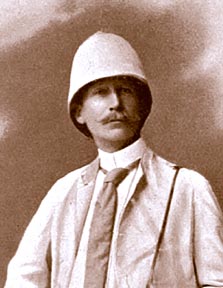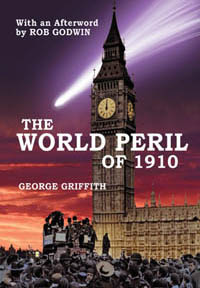| | In 1894 the most famous science fiction writer in England was George Griffith. His stories introduced an extraordinary array of technological marvels to an appreciative British audience but his novels were almost never published in America. Griffith is rarely considered to be in the same league as H.G. Wells but Wells admired Griffith for his ability to write great high adventure stories while packing them with plausible science and prophetic invention. In 1897 Griffith wrote The Great Crellin Comet, a short story that introduced the concept that technology could stave off Armageddon and could save humanity from suffering the ignominious fate of the dinosaurs. In the process Griffith invented the countdown, an eminently practical and dramatic tool that is still used today for space launches. In 1905 Griffith expanded this tale into a full fledged novel of science and romance, changing its name to The World Peril of 1910. For the first time in over a hundred years these two stories are reproduced here complete and unabridged. | AVAILABLE NOW! $9.95 plus shipping ISBN 9781926837086 | ||||
To contact us email hereApogee Prime is a member of the Griffin Media Group© 2010 Griffin Media |
 | George Chetwynd Griffith Jones was born in 1857 in Plymouth England. His father, a cleric, had little money at his death, but had provided young George with access to his extensive library, which included the fantastic works of Jules Verne. On retiring as a seaman, he returned to England and spent several years working as a teacher in the north of England, even though he had never successfully completed his own education. Later, while teaching in Brighton, he began writing for the local newspaper. Griffith was soon to become firmly ensconced in the world of popular magazines.In 1897 he would visit the subject of planetary collisions in his short story The Great Crellin Comet. It would be the first story to address the consequences of a collision with the kinetic energy in a comet and would also be the birth of the countdown. It would be first published in Pearsons Weekly’s Christmas Annual of November 1897. Just before his death he would expand this short story into a full fledged novel. Master novelist Michael Moorcock would later call Griffith “the first professional science fiction writer” because he produced story after story, on demand, for his editors and publishers. |

